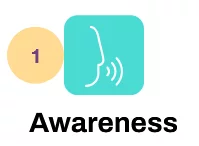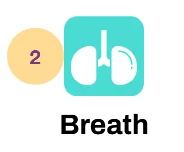
Your Voice Is an Instrument – Are You Tuning It?
Contents
In the world of public speaking, your voice isn’t just a tool, it’s your primary instrument.
Just as a musician wouldn’t perform with an untuned instrument, a speaker shouldn’t step in front of an audience without tuning their voice.
Understanding and training your voice is one of the most overlooked, yet transformative, ways to improve your delivery.
1. Awareness: Know Your Natural Voice
Before you can improve your voice, you need to understand it.
Are you naturally soft-spoken or more commanding? Do you speak too quickly under pressure?
Becoming aware of your tone, pitch, pace, and volume gives you a baseline to build from.
Record yourself in conversation and in presentation mode, you might be surprised by the difference.
Action Point: Record a 1-minute talk. Listen for pitch variation, volume control, and clarity. Note one aspect to improve.
When using storytelling, your natural voice can be a great tool.
2. Breath: The Foundation of Vocal Power
Breath is the fuel for your voice. Without proper breath control, your voice loses power, becomes strained, or fades when you need it most.
The best speakers breathe from their diaphragm, not their chest.
This allows for steady projection, better control, and a calmer delivery.
Action Point: Practice deep diaphragmatic breathing for 5 minutes a day. Use it before every speaking opportunity.
Expert Insight – Breathing Techniques
We’ve seen it time and time again in our presentation skills courses, once someone learns to control their breathing, their entire delivery changes.
Their voice becomes steadier, their pace evens out, and their body language calms naturally.
One technique we teach is “box breathing,” a simple method used by public speakers, athletes, and even Navy SEALs.
It involves breathing in for 4 seconds, holding for 4, exhaling for 4, and pausing for 4 before repeating. It’s ideal for calming nerves just before you speak.
Breathing isn’t just about volume, it’s about control.
If you’ve ever run out of breath mid-sentence or felt your voice tighten under pressure, this is the habit that changes everything.
3. Warm-Ups: Prime Your Voice Before You Speak
Like any physical performance, vocal delivery requires a warm-up.
Simple exercises like humming, lip trills, and tongue twisters get your vocal cords ready and help reduce strain.
Vocal warm-ups also boost clarity and resonance, so your voice carries with less effort.
Action Point: Before any presentation, do 3 vocal warm-up exercises. Record how your voice sounds pre- and post-warm-up.
4. Modulation: Keep Your Voice Engaging
Flat, monotone delivery is a surefire way to lose an audience.
Modulating your voice, adjusting pitch, pace, and volume, adds musicality to your speech and helps emphasize key points.
This keeps listeners interested and highlights your message more effectively.
Action Point: Mark 3 moments in your next talk where you’ll deliberately change pace or pitch for emphasis.
There is no point structuring an effective speech if you cannot deliver one!
5. Resonance: Project Without Strain
Resonance is what gives your voice depth and authority.
It’s the difference between a voice that sounds strong and one that sounds tight or nasal.
Resonance comes from good posture, open airways, and relaxed vocal cords.
It makes your voice feel confident even when you’re nervous.
Action Point: Stand tall, relax your jaw, and hum at different pitches to find your natural resonance. Use it during practice.
Final Thought: Start Tuning Today
Your voice is already powerful. With awareness and consistent practice, it can become your most compelling asset.
Don’t wait for a high-stakes presentation to start tuning it. Train like a speaker, warm up like a performer, and speak like a pro!
- Facebook: https://www.facebook.com/profile.php?id=100066814899655
- X (Twitter): https://twitter.com/AcuityTraining
- LinkedIn: https://www.linkedin.com/company/acuity-training/







